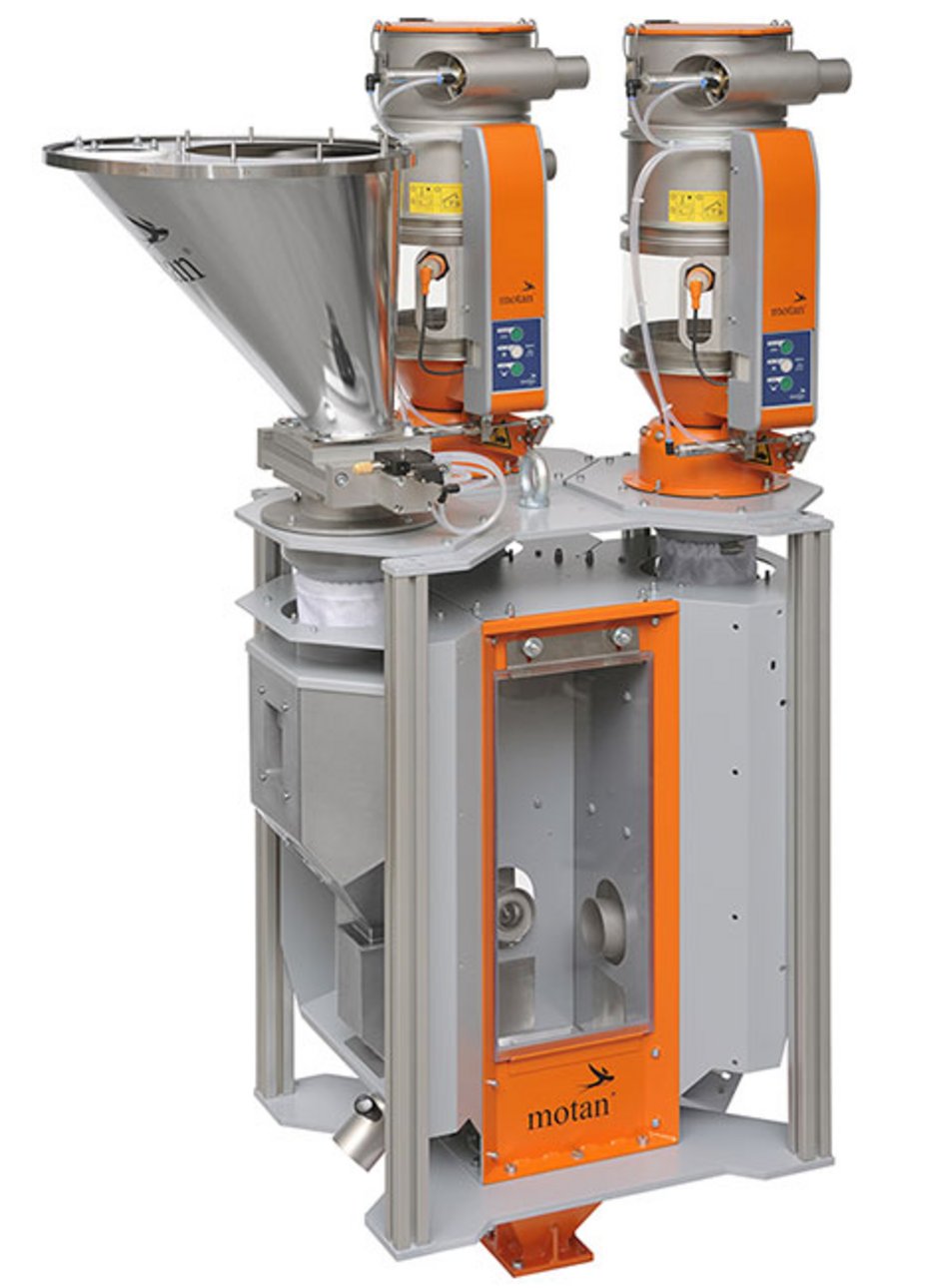65 - Why does a loss-in-weight system need seperate refilling?

Differential dosing scales are gravimetric removal scales (loss-in-weight doseres), that measure the weight loss of the dosing station continuously. The complete dosing station, including dosing bin with material, the dosing device and the motor are installed on a load cell. The controls permanently compare target and actual values of the dosed mass and adjust accordingly if the flow properties of a material result in variations.
The supply in the dosing hopper continuously decreases because of the discharged material flow. Once the minimum fill level in the dosing bin has been reached, it needs to be refilled. This happens during running operation, while the system continues to dose material. The dosing station is refilled from a storage bin or a material loader above the dosing station. Also required are a controlled outlet flap or a slide gate at the hopper.
During refilling, gravimetric throughput control isn’t possible, because the controls are measuring the weight gain of the dosing station. It switches over to volumetric dosing during this time. The correcting value is the value taken before the switch to volumetric dosing operation. Refilling should be completed as quickly as possible, so that the unregulated volumetric dosing phase is kept as short as possible.
By refilling, the entire load system starts to oscillate slightly – which is why a so-called damping time is required before gravimetric dosing can resume. The length of volumetric dosing depends on how quickly the dosing bin is filled and how long the system needs to stabalise.
Prolonging the gravimetric dosing phase with a larger dosing hopper is not a very good idea for a number of reasons. While it is possible to extend the gravimetric dosing phase, refilling, and the thus the volumetric phase, subsequently also takes longer. Additionaly, the daming time for large dosing bins holding large amounts of matreial is also longer than for systems with less mass.
Smaller refilling volumes also have the advantage that smaller dosing hoppers can be used, reducing the total weight of the dosing station. As a result, smaller and more cost efficient load cells can be used. Another added benefit ist hat smaller load cells with the same resolution can measure smaller weight differences, improving reaction times for deviations in the material flow and imporving dosing consistency during the gravimetric dosing phase.
The construction should not be underestimated when handling large refill volumes. Both the dosing hopper and the refilling material loader built on top need to make a sufficient material supply available. Additionally, space is also needed for the material loader above the refilling container. As a result, structures can end up being very high and require stabilising frames or platforms.
Do you need examples for material loader and refilling hopper? You can find our whole range on www.motan.com
